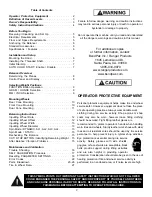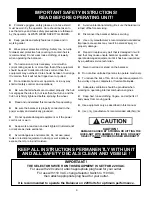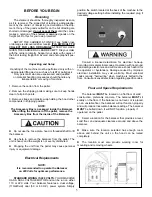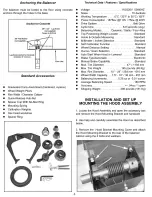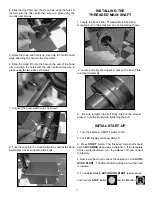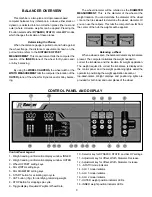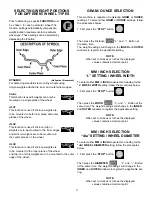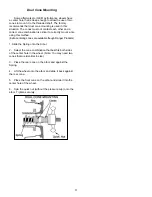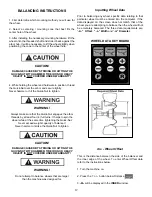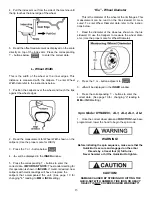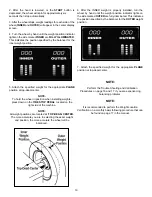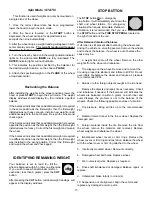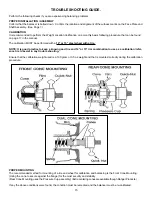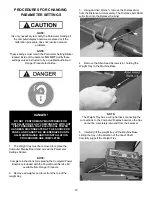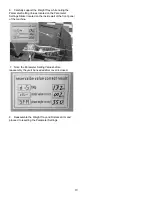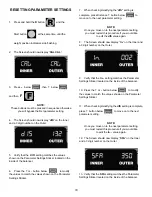
5
BEFORE YOU BEGIN
Receiving
The shipment should be thoroughly inspected as soon
as it is received. The signed bill of lading is acknowledge-
ment, by the carrier, of receipt in good condition of the ship-
ment. If any of the goods called for on the bill of lading are
shorted or damaged, do not accept them until the carrier
makes a notation of the shorted or damaged goods on the
freight bill. Do this for your own protection.
NOTIFY THE CARRIER AT ONCE if any hidden loss
or damage is discovered after receipt. IT IS DIFFICULT TO
COLLECT FOR LOSS OR DAMAGE AFTER YOU HAVE
GIVEN THE CARRIER A CLEAR RECEIPT. File your claim
with the carrier promptly. Support your claim with copies of
the bill of lading, freight bill, invoice, and photographs if pos-
sible.
Unpacking and Setup
Handling of the machine must be performed only with an
appropriate lifting device such as a forklift or pallet jack.
Only personnel who are experienced and qualified
on material handling procedures should handle any
transportation or moving of machine.
1. Remove the carton from the pallet.
2. Remove the shipping bolts making sure to keep hands
clear of all pinch points.
3. Remove straps and plastic wrap holding the hood other
components in shipping position.
NOTE:
The Accessory Box is packaged inside the Balancer.
When lifting the Balancer off the pallet, remove the
Accessory Box from the inside of the Balancer.
Do not use the, face-plate, hood or threaded shaft to lift
the balancer.
Use help to remove the balancer from the pallet. The
unit is heavy and the weight is not evenly distributed.
Dropping the unit from the pallet may cause personal
injury or equipment damage.
Electrical Requirements
NOTE:
It is recommended to operate the Balancer
on 220Volts for optimum performance.
STANDARD WIRING IS 220 VOLTS. YOUR MACHINE
HAS A DUAL VOLTAGE MOTOR and can be run on either
110 or 220 volts. Your balancer features a dual voltage,
(110/220volt) dual (50 or 60 HZ.) power system. Simply
position the switch located at the back of the machine to the
desired voltage setting before installing the required plug if
necessary.
Consult a licensed electrician for electrical hook-up
according to local electrical codes. Operation with no ground
can damage electronics and will create a shock hazard for
the operator or bystanders. Damage caused by improper
electrical installation may void warranty. Most electrical
codes require “hard-wiring” when machine is bolted to the
floor. Consult a licensed electrician regarding specific codes.
Floor and Space Requirements
The
balancer
MUST be located on a flat floor of solid
construction, preferably concrete. The balancer MUST sit
solidly on the floor. If the balancer is not level, or is placed
on an unstable floor, the balancer will not function properly
and will produce inaccurate balance readings. The balancer
MUST be bolted down. It will NOT function properly if
operated on the pallet.
Select a location for the balancer that provides a level,
solid floor, and adequate clearance around and above the
balancer.
Make sure the location selected has enough room
above and behind the unit so the hood can be raised
completely.
The location must also provide working room for
mounting and removing wheels.


